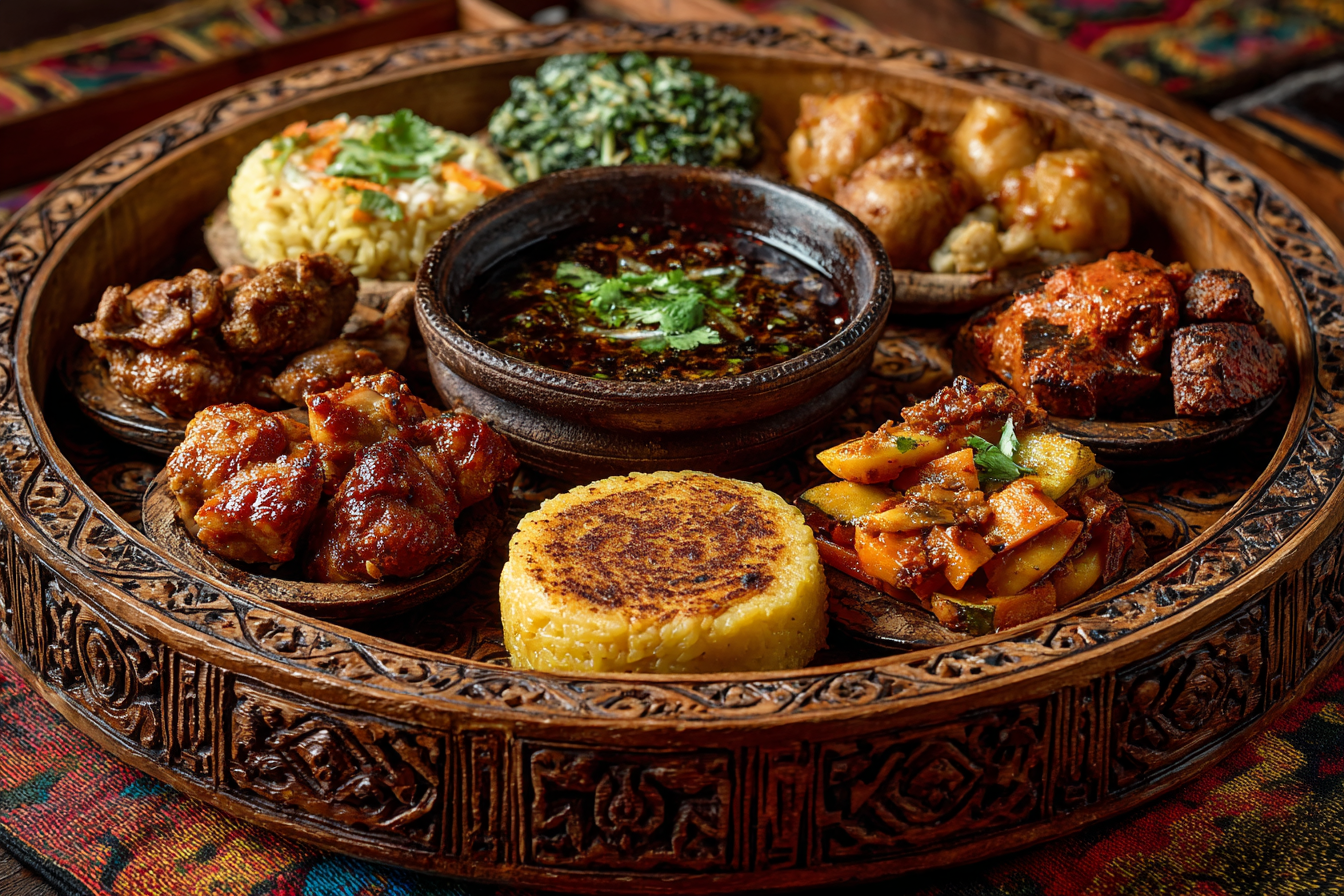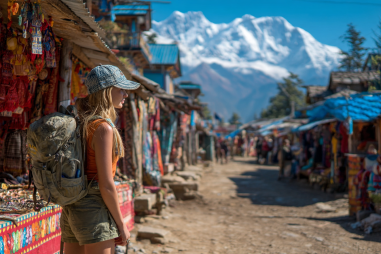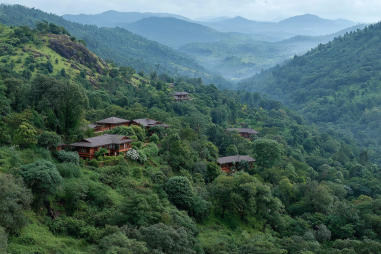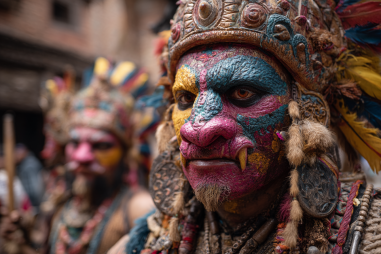Nestled in the heart of Nepal’s Kathmandu Valley, Patan is famed not only for its stunning ancient architecture and rich cultural heritage but also for its vibrant and tantalizing local cuisine. The city offers a unique culinary adventure that showcases the traditional flavors of the Newari community—a group known for their exquisite recipes and festive food culture. Whether you’re a passionate foodie or simply curious about Nepalese tastes, exploring Patan’s food scene is a must-do experience that delights all the senses.
The Culinary Heritage of Patan
Patan, also known as Lalitpur, has a deep-rooted history that shapes every facet of its culture, including its food. The city has long been a melting pot of religious practices, artistic endeavors, and social traditions which have influenced the development of its distinct cuisine. The Newars, the indigenous inhabitants of the Kathmandu Valley, have perfected a culinary tradition passed down through generations. Their foods are not only delicious but are also integral to cultural rituals and festivals. Many of Patan’s local dishes are prepared using time-honored methods with fresh, local ingredients, preserving the authentic flavors and showcasing the city’s culinary craftsmanship.
Understanding Newari Food Culture
The Newari food culture is a vibrant expression of their community life, filled with celebrations and seasonal festivals. Food goes beyond nourishment here; it is an essential part of social gatherings, religious ceremonies, and daily life. Newari cuisine is characterized by its use of spices, fermented foods, and a careful balance of flavors—salty, spicy, tangy, and sweet—that make every meal an experience.
One of the key aspects of Newari food culture is the concept of “Samay Baji,” a traditional platter consisting of multiple small dishes served during special occasions. This assortment allows diners to savor a variety of tastes and textures in one meal, highlighting the importance of balance and variety in their eating habits. Furthermore, many Newari dishes use locally sourced ingredients such as buffalo meat, lentils, rice, and seasonal vegetables, lending freshness and authenticity to their culinary creations.
Popular Local Dishes to Savor
When in Patan, there is a delicious lineup of dishes you simply cannot miss. Each dish offers a glimpse into the city’s heritage and culinary artistry:
- Samay Baji: As mentioned, this traditional platter includes items like black soybeans, fermented fish, spicy potato salad, pickles, and toothsome buffalo meat preparations. It exemplifies the complexity of Newari meals.
- Yomari: A sweet delicacy, yomari are dumplings made from rice flour and stuffed with jaggery and sesame seeds. They are especially popular during the festival of Yomari Punhi.
- Chatamari: Often called the Newari pizza, this rice flour crepe is topped with ingredients such as minced meat, egg, and vegetables, then cooked over an open flame.
- Kwati: A wholesome soup made from sprouted mixed beans, kwati is traditionally enjoyed during the rainy season and is believed to have health benefits.
- Wo: A flavorful steamed rice flour bread that complements many Newari dishes, often used to scoop up meat or vegetable curries.
- Buffalo Meat Curry (Choila): A spicy grilled buffalo meat dish with vibrant seasoning using garlic, ginger, and chili, reflecting the bold flavors of Patan’s palate.
These dishes offer both locals and visitors a chance to immerse themselves in Patan’s food traditions.
Where to Enjoy Patan’s Food Delights
Patan boasts a variety of eateries—from humble street-side stalls to quaint traditional restaurants—each offering an opportunity to sample authentic Newari cuisine.
Street Food Spots
The bustling local markets and streets around the Patan Durbar Square are prime locations for tasting street food. Vendors here serve freshly prepared snacks like chatamari and bara (fried lentil patties), offering a quick and affordable way to indulge in local flavors. The lively atmosphere paired with enticing aromas makes eating here an immersive cultural experience.
Traditional Restaurants
For those seeking a more relaxed setting, several family-run restaurants specialize in Newari cuisine, often housed in historic buildings with traditional décor. These eateries pride themselves on serving authentic dishes made with recipes passed down through generations. Some well-loved establishments frequently recommended by food lovers include local favorites that focus solely on maintaining the purity of Newari culinary art.
Experiencing Food Festivals and Tasting Events
Patan comes alive during its many food-related festivals and events, which offer fantastic opportunities to dive deeper into Newari gastronomy. Festivals like Yomari Punhi, Biska Jatra, and the Rato Machchhendranath celebration often feature special food preparations and communal feasts that bring people together.
Additionally, there are occasional tasting events and culinary tours hosted by local organizations aiming to educate visitors about Newari food traditions. These events may include cooking demonstrations, market visits, and opportunity to sample rare foods that are otherwise hard to find. Participating in these festivities allows travelers to forge a more meaningful connection with Patan’s food heritage.
Navigating Dietary Preferences and Allergies in Patan
While Patan’s cuisine is diverse and flavorful, visitors with specific dietary requirements should keep a few tips in mind to enjoy the local food safely:
- Vegetarian/Vegan Options: Although many Newari dishes highlight meat, there is a good range of vegetarian dishes, particularly involving lentils, beans, and vegetables. Informing the server of your preferences often helps, as some dishes can be adjusted accordingly.
- Gluten Concerns: Traditional Newari food heavily features rice and lentils, which are naturally gluten-free. However, it’s wise to double-check about any wheat-based items or sauces that might contain gluten.
- Allergy Awareness: Many dishes use nuts, dairy, and fermented products. Communicating any allergies before ordering ensures that the food is prepared safely.
- Hygiene Considerations: Since street food is a highlight, it’s recommended to eat from popular and well-frequented stalls with good hygiene practices.
With mindful communication and a little preparation, most travelers can enjoy Patan’s local cuisine comfortably and deliciously.
Fully Embracing Patan Through Its Food
Exploring the flavors of Patan gives you more than just a meal—it offers a rich cultural immersion into the traditions, history, and daily life of its people. From the intricate tastes of Newari dishes to the lively street markets and vibrant festivals, every bite tells a story. Whether savoring a Samay Baji platter in a traditional courtyard restaurant or enjoying freshly grilled choila from a bustling street stall, Patan’s local cuisine promises a memorable and heartwarming experience. So come with an open palate and leave with a deeper appreciation for this beautiful city’s culinary heritage.







